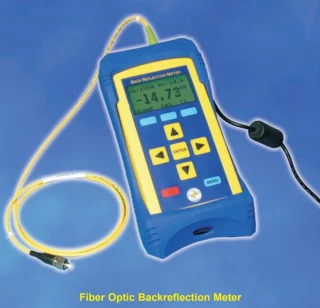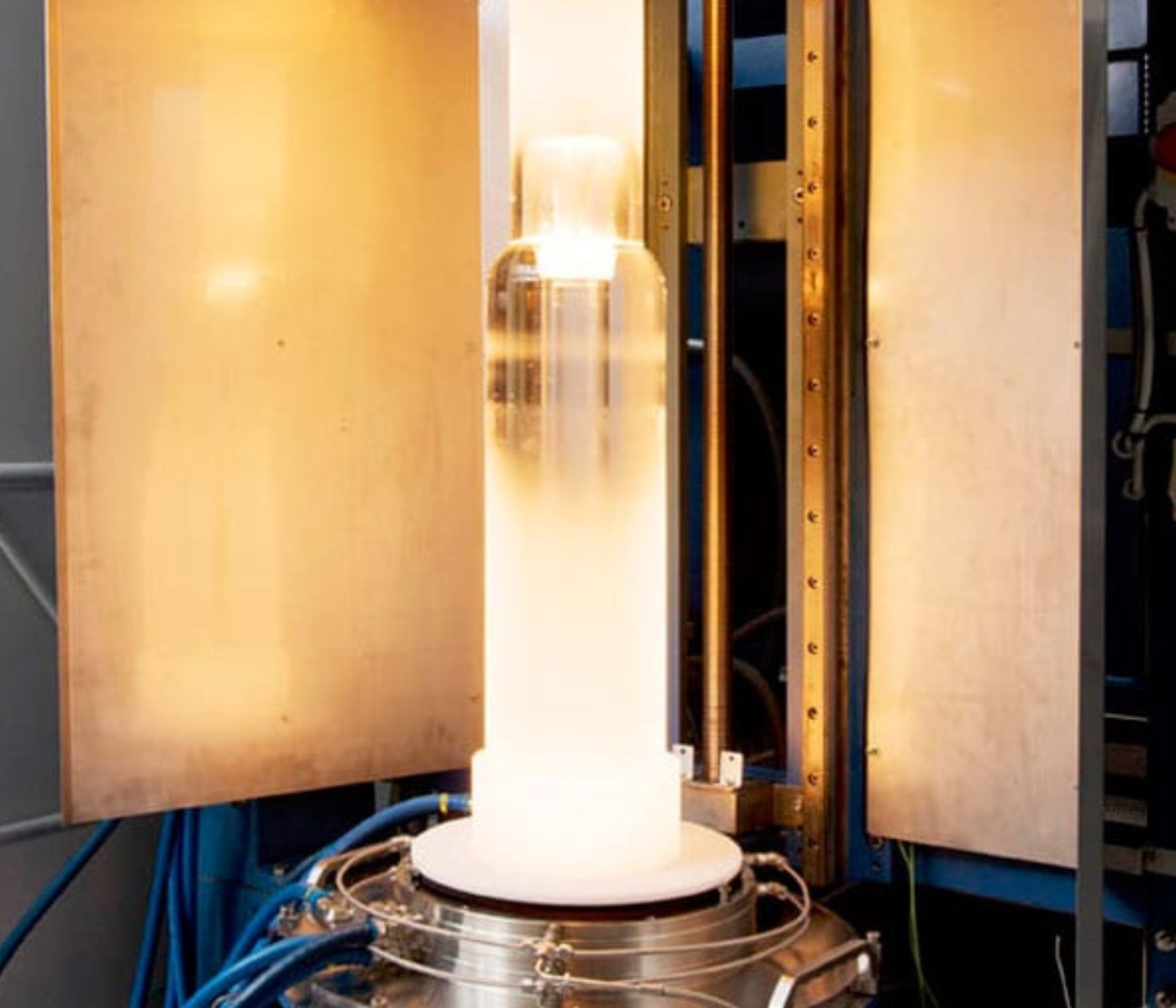Just How an Optical Fibre Diameter Analyser Boosts Quality Assurance in Fibre Manufacturing
The integration of an Optical Fibre Diameter Analyser into Fibre manufacturing procedures represents a substantial development in high quality control methodologies. By providing real-time, specific measurements of Fibre diameters, this modern technology addresses the vital demand for consistency in manufacturing requirements.

Relevance of Fibre Diameter Dimension
Exact dimension of Fibre Diameter is critical in the area of optical Fibre modern technology, as it straight affects the efficiency and integrity of Fibre optic systems. The Diameter of an optical Fibre affects its light-carrying capacity, attenuation, and overall transmission efficiency. Accuracy in gauging Fibre Diameter makes sure that the optical residential properties are kept within defined tolerances, which is important for optimal signal integrity.
Variants in Fibre Diameter can result in enhanced losses due to spreading and modal diffusion, affecting the quality of data transmission. In high-speed interaction systems, such disparities can lead to significant degradation of signal top quality, causing data errors and lowered efficiency. Constant Fibre Diameter is important for compatibility with adapters and splicing innovations, which are essential components of Fibre optic networks.
Quality control procedures in Fibre manufacturing heavily rely upon precise Diameter measurements to ensure conformity with industry criteria. By executing durable measurement strategies, manufacturers can boost product integrity, reduce waste, and boost overall system efficiency. Thus, the value of Fibre Diameter dimension can not be overstated, as it functions as a cornerstone in the improvement of optical Fibre innovation and its applications in modern-day communication networks.
Exactly How the Analyser Functions
The efficient dimension of Fibre Diameter counts on advanced analytical strategies that ensure precision and integrity in optical Fibre production (optical fibre diameter analyser). The Optical Fibre Diameter Analyser utilizes a mix of laser innovation and progressed image processing formulas to properly evaluate the Diameter of fibers as they are produced
Initially, a laser beam of light is routed at the moving Fibre, producing a cross-sectional darkness. The analyser records this shadow using high-resolution cams placed strategically along the production line. The caught photos are after that refined in real-time to determine the Fibre's Diameter with phenomenal precision.
The system utilizes sophisticated algorithms that represent different aspects, consisting of variants in light strength and ecological problems, to boost dimension reliability. It can spot minute modifications in Diameter, such as changes that may happen during the manufacturing process.
Moreover, the analyser is qualified of taking care of numerous fibers concurrently, boosting throughput without jeopardizing accuracy. By providing instantaneous responses on the Diameter, the Optical Fibre Diameter Analyser plays a critical duty in preserving strict quality control criteria, ensuring that the last product meets industry specifications and consumer demands.
Benefits of Real-Time Surveillance
While standard methods of monitoring Fibre Diameter often entail lengthy post-production checks, real-time monitoring dramatically improves the efficiency and high quality of optical Fibre production. optical fibre diameter analyser. This proactive strategy enables manufacturers to recognize discrepancies in Fibre Diameter as they take place, instead of waiting till production is full to evaluate top quality
By continuously gauging the Diameter throughout production, makers can ensure that the fibers meet rigid requirements, resulting in lowered variability and boosted consistency. Real-time tracking additionally enables instant corrective actions to be taken, decreasing waste and additional hints preventing faulty fibers from entering the supply chain.
Moreover, this modern technology facilitates improved information collection and analysis, offering understandings right into manufacturing trends and prospective locations for renovation. Such data-driven decision-making empowers producers to enhance procedures and maintain high standards of quality assurance.
On top of that, real-time surveillance cultivates a culture of continuous enhancement within the manufacturing setting. Staff members are more engaged when they can see the impact of their operate in real-time, causing increased liability and a dedication to quality. On the whole, the implementation of real-time monitoring systems in optical Fibre manufacturing translates to superior product quality and increased customer complete satisfaction.
Effect on Manufacturing Performance
Applying optical Fibre Diameter analysers substantially boosts manufacturing performance by simplifying the production procedure. These gadgets assist in constant tracking of Fibre Diameter, permitting makers to identify inconsistencies in real-time. By recognizing variances immediately, production lines can be adjusted quickly, minimizing downtime and lowering the chance of creating defective items.
In addition, the combination of these analysers into the manufacturing process allows better source allotment. With accurate Diameter measurements, drivers can enhance material use, making sure that resources are not thrown away on problematic fibres. This accuracy also adds to less scrap and revamp, eventually lowering manufacturing costs.
The automation supplied by optical Fibre Diameter analysers reduces dependence on manual examinations, which are prone and commonly time-consuming to special info human mistake. Therefore, staff members can concentrate on even more strategic tasks, boosting overall performance.
Moreover, the information created from these analysers can notify procedure improvements and assist in far better decision-making. By evaluating fads in Fibre Diameter variants, suppliers can execute aggressive measures to improve manufacturing techniques and preserve constant top quality. In summary, optical Fibre Diameter analysers play an essential role in improving manufacturing efficiency, resulting in better output and enhanced earnings.
Study and Success Stories
Across different markets, instance researches highlight the transformative impact of optical Fibre Diameter analysers on production procedures. One famous instance is a leading telecoms company that faced challenges with inconsistent Fibre sizes, leading to increased rejection rates. By integrating an optical Fibre Diameter analyser, the company achieved real-time tracking of Fibre dimensions, resulting in a 30% reduction in problems and significant cost savings.

Moreover, a research study institution concentrating on advanced products utilized optical Fibre Diameter analysers to fine-tune their experimental procedures. The analyser's capability to offer thorough understandings into Fibre uniformity made it possible for the growth of ingenious products with improved efficiency features.
These success stories emphasize the essential function of optical Fibre Diameter analysers in enhancing quality assurance, improving production performance, and driving development throughout diverse sectors.
Conclusion
To conclude, the Optical Fibre Diameter Analyser plays an essential role in improving top quality control within Fibre production. By supplying precise, real-time measurements and promoting immediate restorative activities, this technology considerably lowers variability and reduces waste. The application of such innovative devices fosters a culture of constant renovation and functional efficiency, ultimately making sure conformity with sector criteria and maintaining competitiveness. As shown via numerous study, the analyser shows necessary for attaining premium item top quality in Fibre production.

The execution of optical Fibre Diameter analysers allowed for rigorous high quality control, making certain that the created fibres satisfied exacting sector requirements.In conclusion, the Optical Fibre Diameter Analyser plays click here to find out more an essential role in improving quality control within Fibre production.